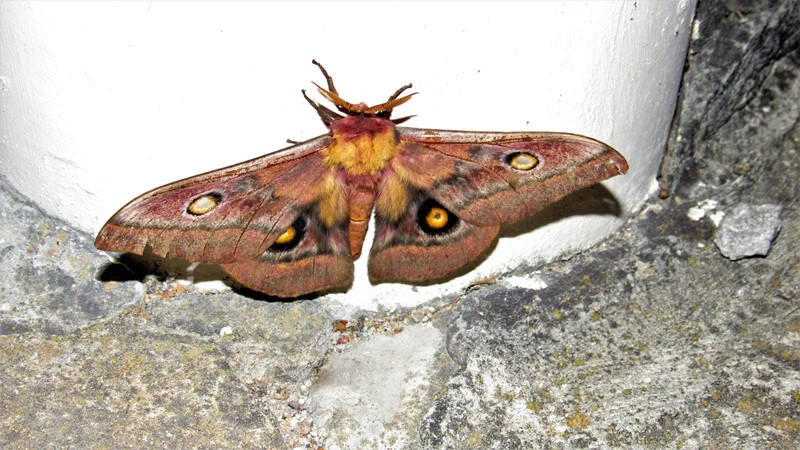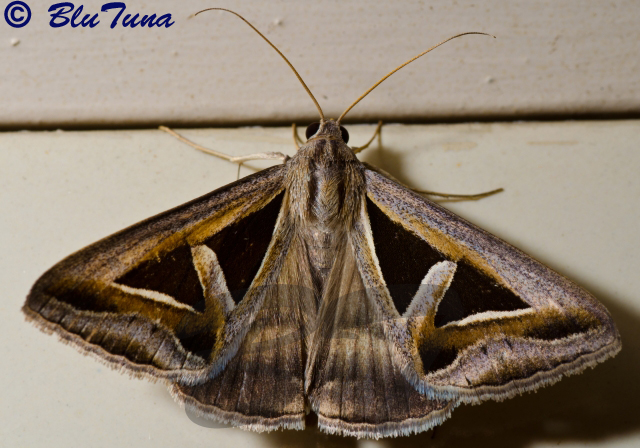Family Crambidae. Subfamily Spilomelinae
Male, Nelspruit © Richprins
Description
Adults have wing spans of 19 to 21 mm, and are 9 to 12 mm long. Long antennae, usually folded back. Abdomen long slender usually upturned.
The forewings are grayish brown or gray with two yellowish-white transverse lines, the outer line with a finger-like projection directed towards the apex of the wing, and in the male moth, the line nearest the body ends in a cream coloured wedge shaped fovea/triangular marking.
The hindwings are pale olive-brown, each with a cream coloured central wavy line and cream-coloured wing fringe.
The head, antennae and body are olive brown with each body segment having cream-coloured rings. The legs are pale brown.
The male is distinguished from the female by the evident fovea (= scaleless windows) present on the forweings and the slightly longer taped body.
Distribution
Native to Southern Europe and the eastern Mediterranean region, but is now established in many countries in Europe, the Middle East, Africa and North America through the nursery trade, often in greenhouses.
Biology
A common pest on various plants, a citrus nursery pest in South Africa. Larvae are polyphagous, with hosts recorded from 38 plant families. The hosts include a wide range of commercially-grown field crops and ornamental plants, and they can be pests of aquatic plants in greenhouses. The most reported host species is pepper (Capsicum annuum, Solanaceae).
Links:
African Moths
https://www.citrusresourcewarehouse.org ... -2017/file





 © BluTuna
© BluTuna